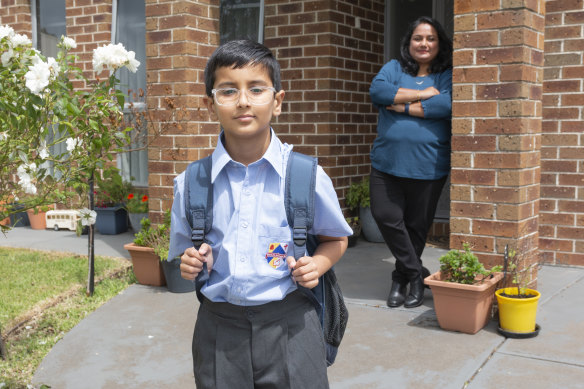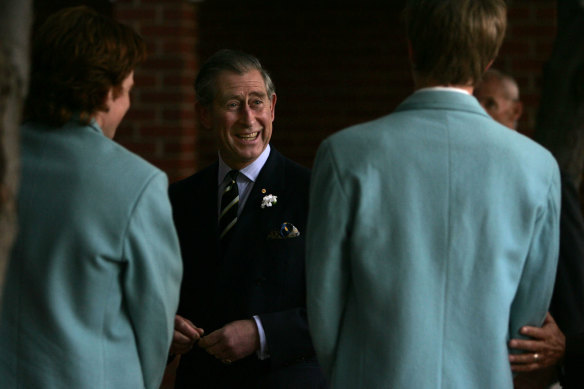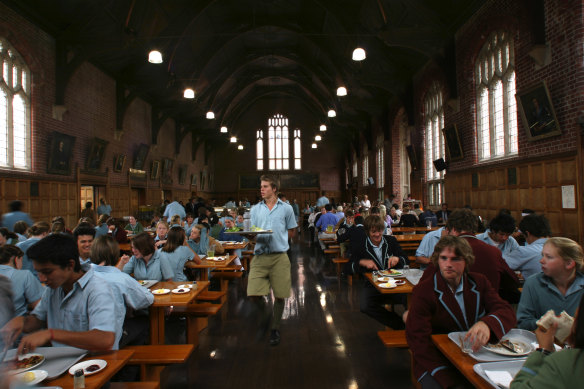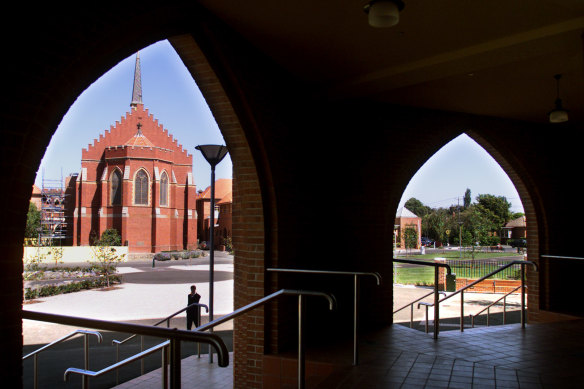The cost of putting a child through prep to year 12 has climbed to more than half a million dollars at Victoria’s most expensive private schools, as fees soar again for 2024.
An analysis by The Age based on compulsory fees published by schools so far this year found the price of all 13 years of schooling has risen to more than $560,000 at Geelong Grammar, including one mandatory year of boarding.

Eight-year-old Aarav Dagia, with mum Prachi Maisuria, is moving from a public to a lower-fee private school.Credit: Jacob Pattison
Fees for year 12 tuition at the school, which has taught the likes of Rupert Murdoch and even briefly King Charles, have now tipped over $50,000 for the first time, higher than the most expensive schools in Sydney.
Based on available numbers, Victoria’s 10 most expensive schools all charge more than $450,000 for prep to year 12 tuition – about the median price of a house in Melton. With inflation and other yearly fee hikes, those costs would be expected to grow even more over the next decade.
At some schools, fees for 2024 have climbed by almost 10 per cent compared to 2023, when there was a similarly high fee increase following a pandemic freeze.
Schools say they are now feeling the pinch of inflation and higher wages, and, in Victoria, the government’s decision to extend payroll tax to private schools earning more than $15,000 per student in fees.
But education economists say many private schools could afford to absorb extra costs, given they remain over-funded by millions of taxpayer dollars and often return healthy surpluses.
The cost of a full education at Melbourne’s Lauriston Girls’ School, where there is also one mandatory boarding year, is now the second most expensive in the state at $508,000.
For families gearing up for their child’s very first day of school, a year of prep is most expensive at Melbourne Grammar at more than $33,000, with full schooling totaling $483,000. Scotch College will also charge close to $33,000 this year for prep, as total tuition costs exceed $476,000 over the 13 years.
Most schools do not include extras such as camps, excursions and books in their fee schedules. But some, including Caulfield Grammar School, have included a new payroll tax levy that will charge up to $890 a year to cover what it says will cost it almost $7 million more annually.

The future King Charles III with Geelong Grammar students in 2005 when he returned to the campus he attended as a teen. Credit: Wayne Taylor
Public schools, almost all of which are still funded below the School Resourcing Standard (SRS) agreed to by governments a decade ago, pay payroll tax already.
Economist Adam Rorris, who helped the federal government devise the SRS, said it was perfectly reasonable for the Victorian government “to close this loophole for private schools. Everyone else pays.”
Despite fee hikes, demand for private schools continues to boom across Australia, which has one of the most privatised school systems in the world.
Some parents pay hundreds of dollars just to get on waiting lists, often citing smaller class sizes, multimillion-dollar facilities or a particular religious focus as reasons for choosing a private school.
Analysis of both NAPLAN and international PISA testing shows that, when you adjust for socioeconomic status, students at private schools do not perform any better than public or Catholic, with private school performance declining more than the other sectors on the latest PISA results.
“Which begs the question: what are parents really paying for?” said Rorris. “These fee hikes will hurt them, but higher fees also make a school more exclusive, so the market will still be there. Of course, for the same money, you could buy your kid a house outright. Or at least put down one big deposit.”
Bhavika Unnadkat, Victorian board member of the Australian Parents Council representing private-school families, said many students had been forced to move to public or Catholic schools as the cost-of-living crisis deepened. “Parents have been seeing at least a 5 per cent fee rise,” she said. “Some have moved suburbs to get into a [certain public] school zone instead.”
Edstart, which offers loans to families and runs payment systems for schools, said its yet-to-be-published analysis of 2024 fees suggests fees will jump even more than in 2023, and there is increasing demand for lower-fee private schools, particularly in new suburbs still being developed around Melbourne and Sydney.

The dining hall at Geelong Grammar.Credit: Cathryn Tremain
Craigieburn mother Prachi Maisuria has waited more than a year to move her eight-year-old son Aarav from his public school to private. Now that he has been accepted into the lower-fee Hume Anglican Grammar, the family has been busy all summer buying uniforms and supplies.
“But I really had to crunch the numbers, calculating fees from year 3 to year 12,” said Maisuria. “Plus there are more extras. The school is further away, so there’s transport. There are more uniforms involved, house colours, blazers, ties. But his public school would end at grade 6, and I wanted [Aarav] to have one school all the way through.”
Aarav, meanwhile, is most excited about the new bus ride every morning.
Over the decade to 2020, private school fees rose by 50 per cent on average nationally, far outstripping inflation at 22 per cent and wage growth at 29 per cent, a 2022 analysis found.
Geelong Grammar year 12 fees have climbed about 36 per cent in the past decade, from $32,000 in 2014.
Though day rates were used in Age analysis, the school noted it was predominantly a boarding school, and, for senior students, meals and after-school activities were factored into the 8am to 8.30pm timetable.
Chair of Geelong Grammar Council Paddy Handbury told families that the 8 per cent fee rise for 2024 reflected wage growth and high inflation post-COVID, as well as government funding changes and the new payroll tax. But he said the school had “showed restraint” in raising fees, charging an additional 2 per cent in 2022 and 6 per cent last year.
Independent Schools Victoria was contacted for comment.

Private boys school Scotch College, in Hawthorn, is among the most expensive schools in Victoria.Credit: Simon Schluter
The Morning Edition newsletter is our guide to the day’s most important and interesting stories, analysis and insights. Sign up here.